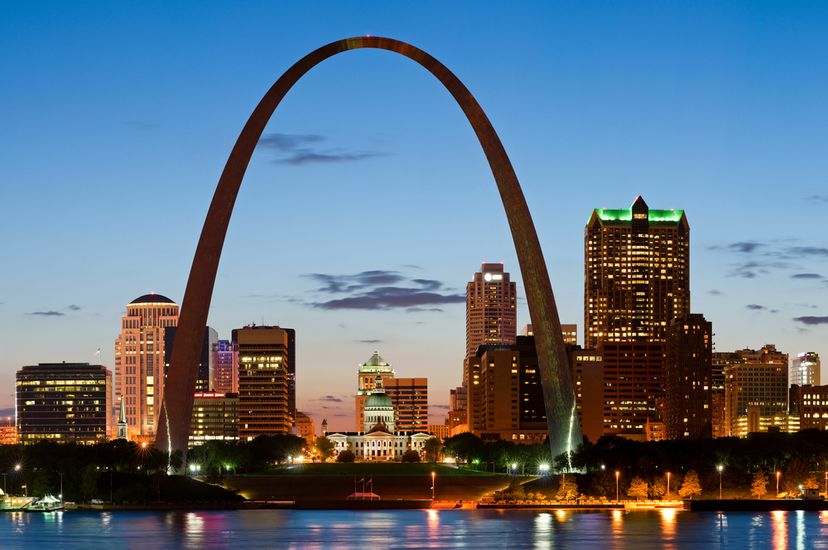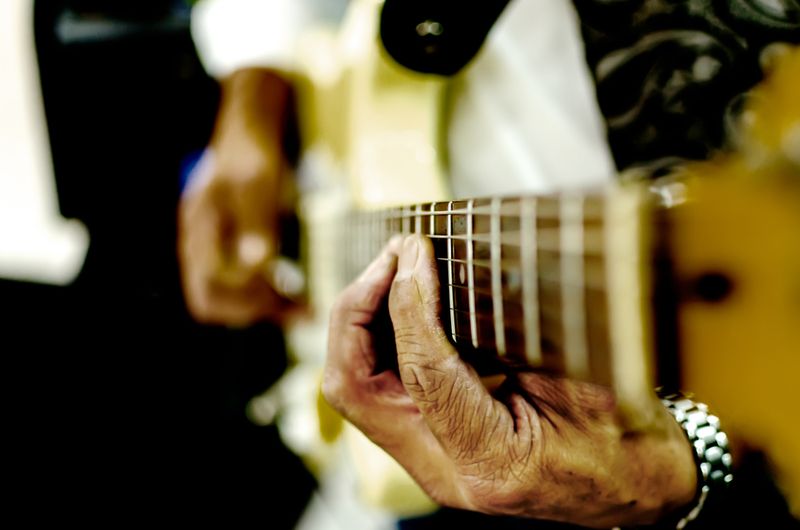
With its delightful mix of Southern hospitality and Midwestern sensibility, St. Louis has a down-home vibe unlike any other major American city. Since its early days as a trading post on the banks of the mighty Mississippi, St. Louis has attracted a diverse range of cultures that today are represented by a patchwork of more than 75 distinct neighborhoods. This gives Missouri’s largest metropolis a small-town charm that invites exploration. St. Louis is the kind of city that can be approached from many angles. There are cultural amenities here to satisfy even the most discriminating connoisseur of art, music and fine cuisine, and there are more free activities to enjoy than in any other Midwest city. From historic sights and architectural gems like the Gateway Arch to beer, baseball and the blues, there’s good reason for any traveler to say, “Meet me in St. Louis!”
Advertisement
1. St. Louis Zoo
Stretched over 90 acres of the city’s scenic Forest Park, the St. Louis Zoo is renowned the world over for its dedication to wildlife conservation. The zoo is home to nearly 20,000 animals, many of which are rare and endangered. Great effort goes into ensuring that the habitats are as naturalistic as possible. The zoo is divided into themed zones with both indoor and outdoor exhibits. Historic Hill boasts a bird garden and primate house. Red Rocks is big cat country. With its petting zoo and insectariums, the Discovery Corner is a big hit with children. Best of all, admission to the St. Louis Zoo is free.

2. Forest Park
Site of the 1904 World’s Fair that put St. Louis on the global map, Forest Park encompasses 1,371 acres of the western section of the city. Thanks to the city’s multi-million development project, wetlands in the park have restored, providing a habitat for birds, and improvements have been made to the manmade lakes and ponds. Regarded as the heart of St. Louis, the beautiful park is the perfect place to enjoy outdoor activities ranging from tennis, baseball and ice skating to boating, fishing and golf. Forest Park is also home to many of the city’s best cultural attractions, including the Missouri History Museum and the St. Louis Art Museum, Science Center and Zoo.

3. Anheuser-Busch Brewery
The Anheuser-Busch brewery was established in St. Louis in 1852, and visitors can view many of the company’s 19th-century buildings with a free tour of the still-operating brewery. The tour includes a visit to the brew house, the packaging plant and the famous Clydesdale horses and stables. Visitors over the age of 21 are offered complimentary beer samples at the end of the tour. If a sample isn’t enough to quench your thirst, you can purchase more at The Biergarten or gift shop. While the tour is free, it operates on a first come, first served basis, so make plans to visit early in the day.

4. Citygarden
Located in the city’s busy downtown district, Citygarden is one of the latest additions to the St. Louis art scene. In 2009, two empty city blocks were converted into a park and sculpture garden, and the site now features 24 pieces of art created by some of the world’s most renowned sculptors, including a large bronze head by Igor Mitoraj and a digital piece by Julian Opie. Visitors are free to touch and even climb on the sculptures. Water features like a waterfall, pool and a 102 spray jet fountain where kids can splash and play add to the park’s interactive ambiance. A limestone wall in the park’s northern section doubles as a public viewing screen for movies and baseball games.

Advertisement
5. St. Louis Science Center
Located in the southeast corner of Forest Park, the St. Louis Science Center features a dinosaur exhibit, a planetarium, numerous interactive science activities and an IMAX theater. More than 750 exhibits are displayed in two buildings connected by a covered walkway. Three floors of the four-story main building offer views of the giant Energizer Ball Machine, a kinetic sculpture featuring colored balls that wind through a quarter mile of track, loops and nets. Children can use their boundless energy to power the contraption on a human-sized hamster wheel on the first floor. The museum is open daily and much to the delight of families, admission is free.

6. Explore ‘The Hill’
One of the most popular of the city’s 79 diverse neighborhoods, The Hill has been home to St. Louis’ Italian community since they first immigrated to the neighborhood to work the clay mines in the 1890’s. Government-designated neighborhoods in St. Louis have their own organizations that allow each district to maintain their unique identity, so it’s no surprise that The Hill boasts the best Italian restaurants, salami shops and bakeries in the city. Located near the highest point in the city, The Hill is not only famous for its world-class chefs but for its contributions to the world of sport as well. Yogi Berra, Jack Buck and Joe Garagiola all grew up on The Hill.

7. Meramec Caverns
Situated near St. Louis in the Ozark Mountains lies the cave system known as Meramec Caverns. With nearly five miles of underground passageways and caverns to explore, it’s the largest commercial cave in Missouri and one of the region’s most popular tourist destinations. Originally known as Saltpeter Cave after an abundance of the mineral (also known as potassium nitrate) was found there in 1720. The cave was extensively mined for 144 years as this mineral since was a key ingredient for making gunpowder at the time. These days the caves offer thrills and chills for children, and adults will find the history just as intriguing. Pre-Columbian artifacts have been found in the caves, and Jesse James and his gang are thought to have used the caverns as a hideout. Rangers offer guided tours along well-lit walkways, making the caverns a safe, fun and educational attraction the whole family will enjoy.

8. Listen to the Blues
The blues has deep roots in St. Louis, so when it comes to nightlife options in the city, it’s hard to beat the appeal of listening to a live blues band while enjoying some of St. Louis’ best comfort food. Savvy music lovers head to BB’s Jazz, Blues & Soups, an award-winning nightclub and restaurant located near Busch Stadium at Broadway. Local and national acts appear nightly, and the menu features an array of St. Louis-style cuisine, including Louisiana File’ Gumbo, a spicy Cajun stew of meats, fish, peppers and onions served with rice and homemade cornbread. For something a little different, visit Blues City Deli on McNair Ave. A sandwich shop by day serving specialties like a hearty muffaletta or Italian sandwich but on Thursday evenings and Saturday afternoons, the deli is transformed when local blues legends take the stage and transform this place into one big party.

9. Missouri Botanical Garden
No visit to St. Louis is complete without a visit to the city’s amazing botanical garden. Opened in 1859, it’s the nation’s oldest and one of the world’s best. From the 150 spring-blooming cheery trees to the winter honeysuckles and witch hazels, the 79-acre parkland is gorgeous in every season. The artificial rainforest enclosed in a geodesic dome offers year-round enjoyment, as do the artful plantings in the 14-acre Japanese garden. There’s a children’s garden too, complete with a recreated pioneer village that includes a fort and a tree house. Children will love winding their way through the maze in the Victorian garden as well. You’ll want to spend several hours exploring this natural treasure. Children up to the age of 12 get in for free and adult admission is just $8.

Advertisement
10. Walk the Delmar Loop
Named after a long-gone streetcar turnaround, The Loop is an entertainment, retail and restaurant district centered around Delmar Boulevard on the western edge of St. Louis. Offering six blocks of shops, restaurants, cultural and music venues, it’s a great neighborhood to visit any time of the day. The historic district features stately homes and tree-shaded streets for leisurely strolls, and inviting open-air cafés and restaurants offer outdoor seating for people-watching. In The Loop, you’ll find Blueberry Hill, the landmark restaurant and music club which is overflowing with pop culture memorabilia. The Loop is also home to the St. Louis Walk of Fame, which commemorates musicians who got their start in the city, including Janis Joplin, Chuck Berry, Miles Davis and Tina Turner.

11. Cahokia Mounds Historic Site
Although named after a tribe of Native Americans who moved into the area during the 17th century, the Cahokia Mounds were first inhabited around 700 A.D. Situated across the Mississippi River from St. Louis, the site consists of around 2,200 acres of land featuring 80 mounds, the archeological remnants of a Pre-Columbian settlement. The largest prehistoric site north of Mexico, the ancient city was home to up to 20,000 people in its heyday, but beginning around the 13th century, the population began to decline. By 1400 A.D., the site had been abandoned. What became of the original inhabitants remains a mystery. Today visitors can take self-guided tours of the designated UNESCO World Heritage Site mounds and postulate their own theories.

12. The Gateway Arch
Dominating the city’s downtown skyline, the Gateway Arch is undoubtedly St. Louis’ most recognizable landmark. Completed in 1965, the stainless-steel structure rising 630 feet into the air is the tallest monument built in the Western Hemisphere and the world’s tallest arch. Taking the tram to the top of the arch is a must-do activity for anyone visiting the city. The “Journey to the Top” costs $10 for adults and $5 for children, a small price for the spectacular views that await you. The 102-wide observation deck offers remarkable views of the city and the Mississippi River. The museum at the base of the arch showcases the timeline of the historical events that inspired the arc’s construction. While the iconic Gateway Arch was built to celebrate the country’s westward expansion, it has come to symbolize both the city’s past and its dreams for the future.

Advertisement